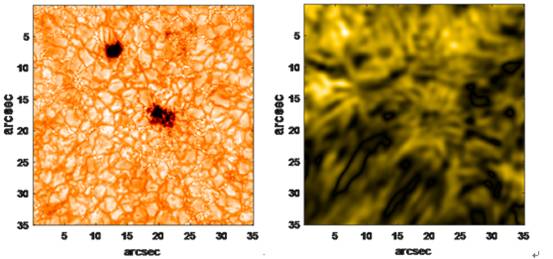
After the first light of 1.8-meter solar telescope, researchers have tried their best to improve the system performance, they carried out observation experiments despite the bad air condition in Chengdu. On April 28, 2020, they obtained the near-diffraction limit resolution observation results of the solar atmospheric photosphere and chromospheres.

Fig. 1. The near-diffraction limit observation results of the solar atmospheric light sphere (left) and color sphere (right) observed by 1.8-meter solar telescope. (Image by IOE)
On April 30, 2020, theresearchers tracked and observed AR12760 in solar active area, and the target was a negative sunspot in this area. Finally, they obtained high-resolution observation data of more than an hour (07:53-09:01 UT).

Figure 2. Evolution image of the solar active area AR12760 (1 hour change). (Image by IOE)
With the arrival of the 25th solar activity week, solar activity is bound to become more frequent, and the impact on space weather will also become more prominent. In future, the 1.8-meter solar telescope will be equipped with solar high-resolution velocity field and magnetic field detection instruments to fully exploit the potential of this system, and make important contributions to high-resolution detection of the solar atmosphere.

86-10-68597521 (day)
86-10-68597289 (night)

86-10-68511095 (day)
86-10-68512458 (night)

cas_en@cas.cn

52 Sanlihe Rd., Xicheng District,
Beijing, China (100864)

